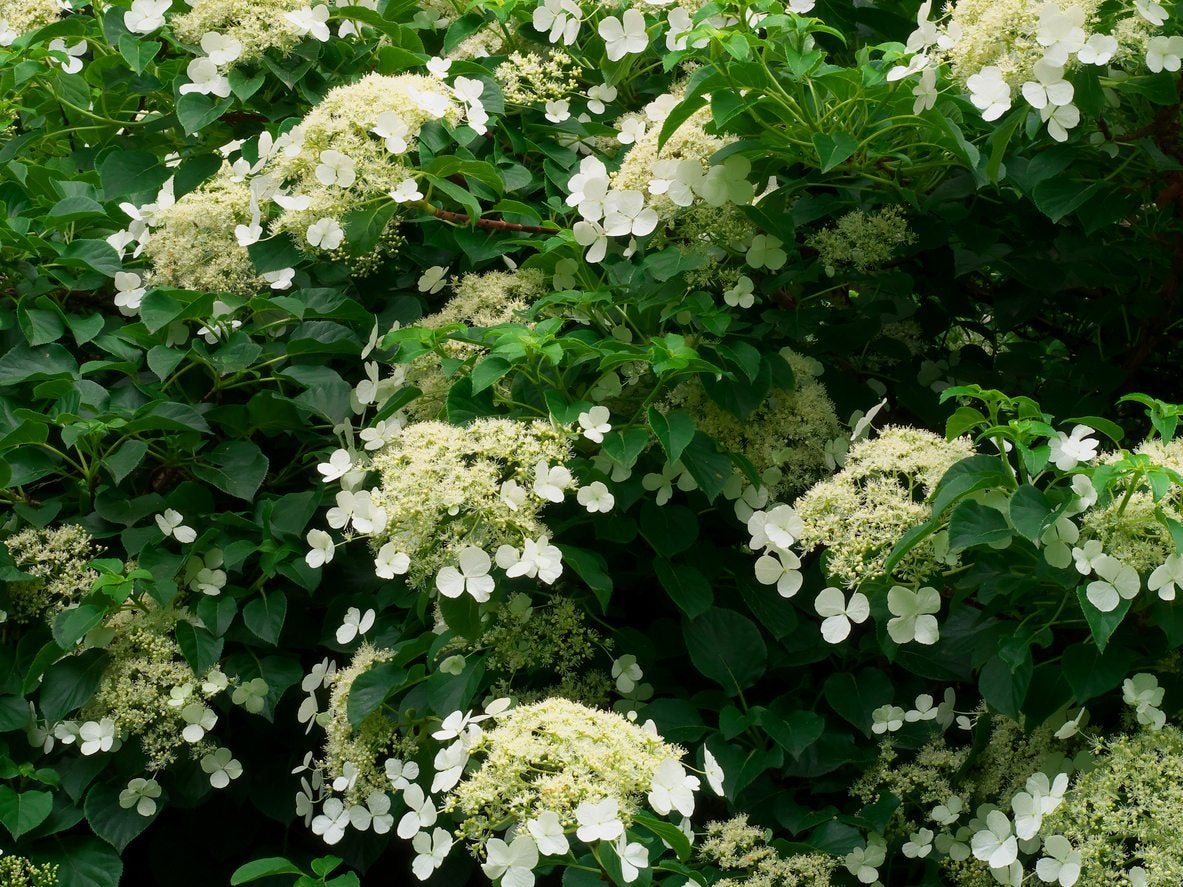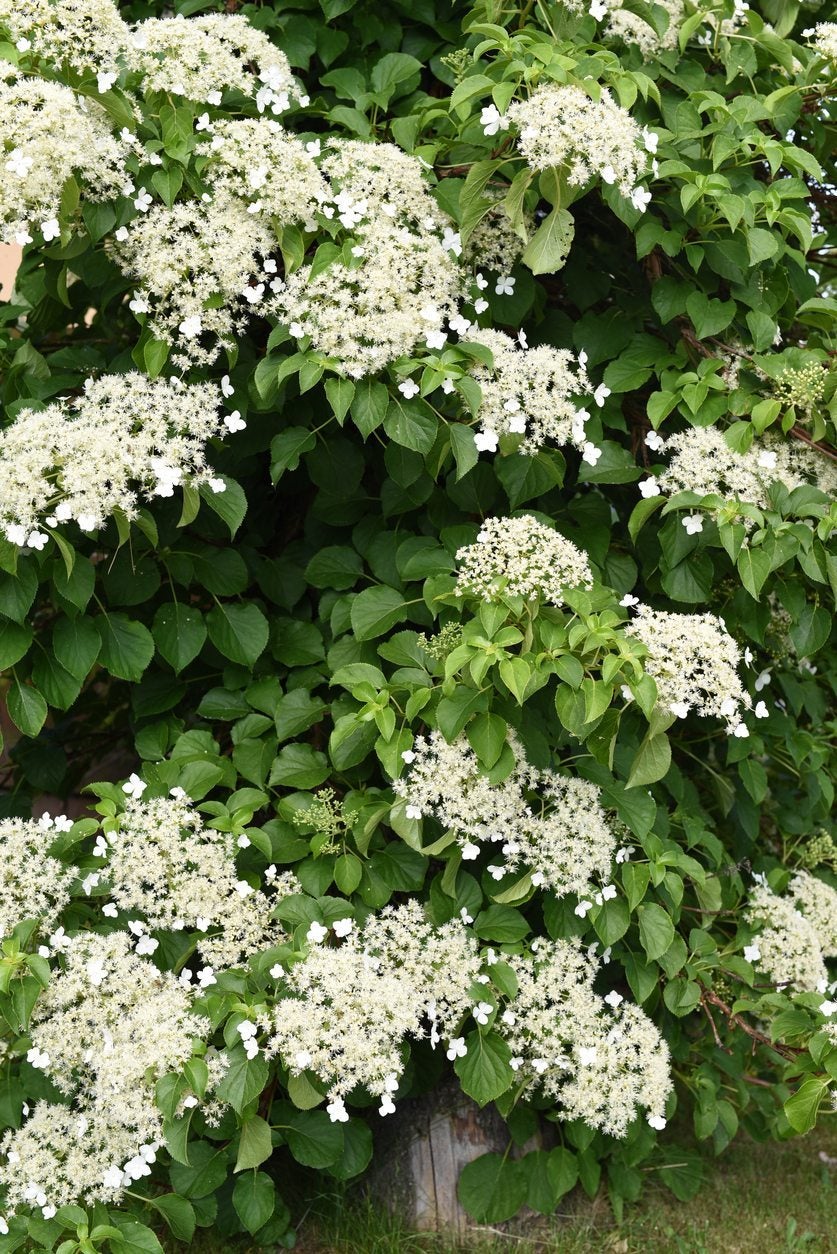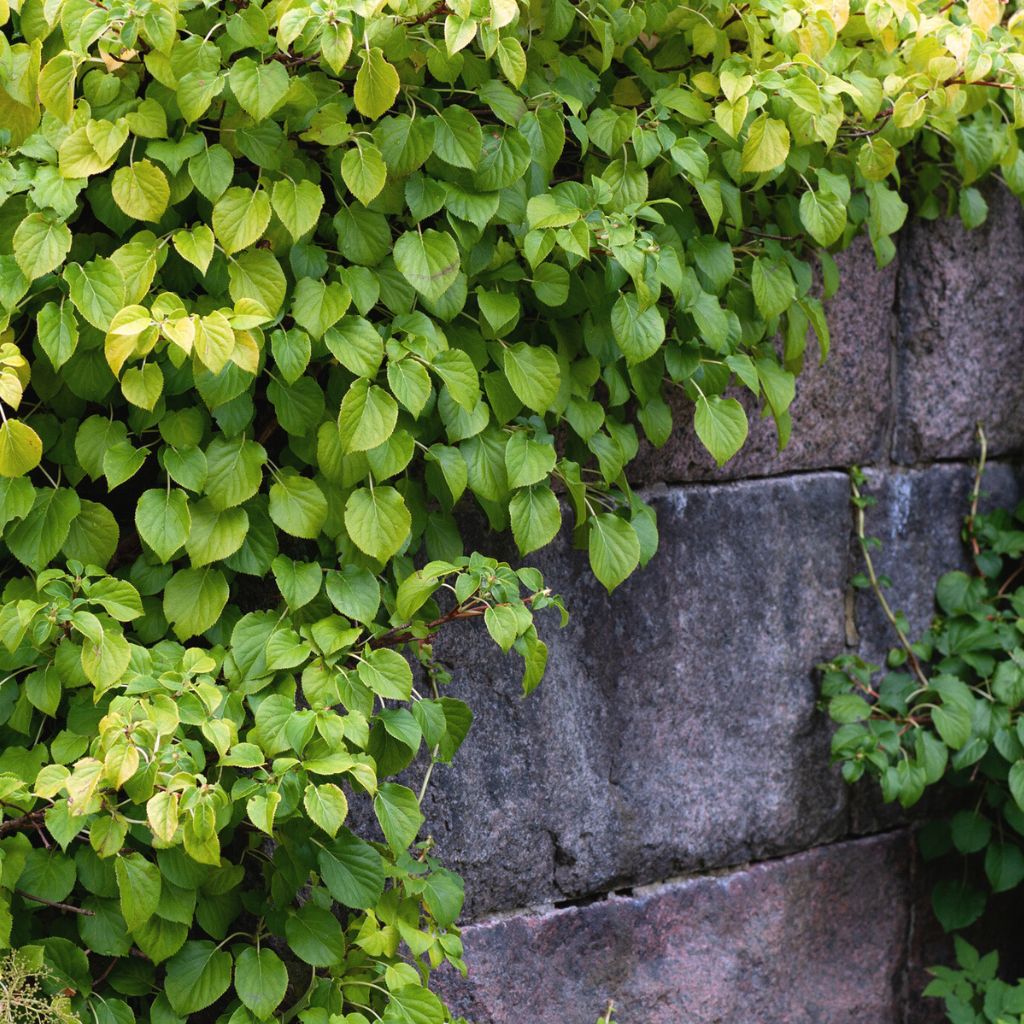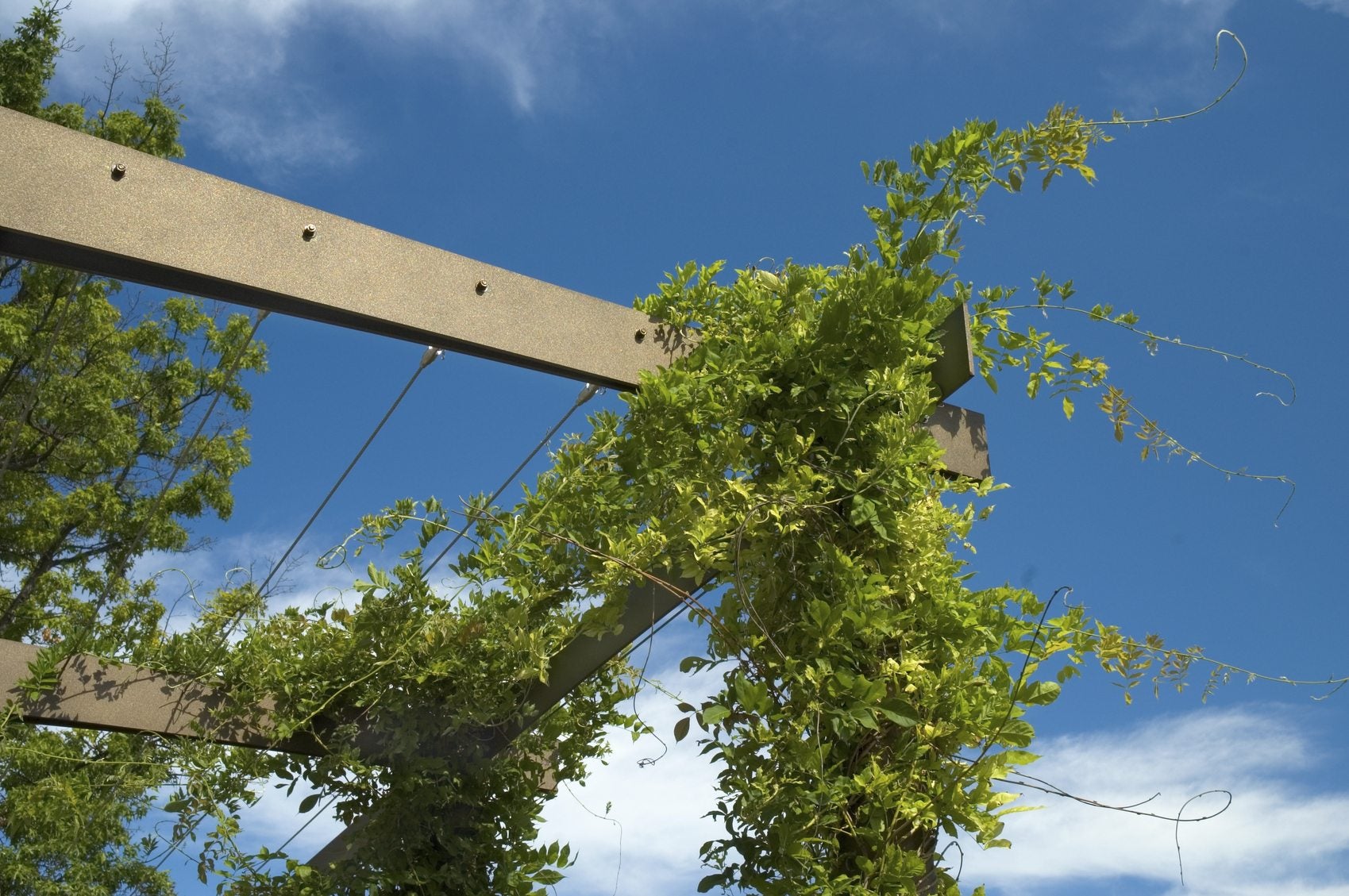Climbing Hydrangea Plant - Tips On How To Grow a Climbing Hydrangea


Climbing hydrangeas feature large, fragrant clusters of white flowers that bloom in late spring and summer against a backdrop of dark green, heart-shaped foliage. These massive vines readily climb columns, trees, and other supporting structures. A climbing hydrangea plant grows 30 to 80 feet (9-24 m.) tall, but it tolerates pruning to shorter heights. You can also grow it as a shrub.
Info on Climbing Hydrangeas
Climbing hydrangeas (Hydrangea anomala subsp. petiolaris) are large, heavy vines that need substantial support. A climbing hydrangea plant clings to the supporting structure by two methods -- twining vines that wrap themselves around the structure, and aerial roots that grow along the main stem cling to vertical surfaces.
The flower clusters consist of a central mass of tiny, fertile flowers surrounded by a ring of larger, infertile flowers. You can leave drying flower clusters on the vine after they bloom, and they will keep their shape and add interest, even after the foliage begins to fall. The fertile flowers may also produce seed pods for propagating, if desired.
How to Care for Climbing Hydrangea
Growing climbing hydrangeas is easy. The plants are hardy in USDA plant hardiness zones 5 through 7. Climbing hydrangeas need a rich, moist soil that is well-drained. If your soil needs improvement, dig in a generous amount of compost before planting.
The vine grows well in full sun or partial shade. In areas with hot summers, provide some afternoon shade. When growing climbing hydrangeas against a wall, choose a northern or eastern exposure.
How to care for climbing hydrangea isn't difficult either. Water the vine regularly to keep the soil moist. A layer of mulch around the base of the plant will help the soil retain moisture and help keep weeds at bay. Feed the plant in late winter or early spring, just before new leaves begin to bud and again in summer when the flowers bloom. Use compost or a slow-release fertilizer.
Prune the climbing hydrangea plant in late spring or early summer to remove dead, diseased or damaged branches. Remove crossed branches that may rub against each other; rubbing creates an entry point for insects and disease.
Gardening tips, videos, info and more delivered right to your inbox!
Sign up for the Gardening Know How newsletter today and receive a free copy of our e-book "How to Grow Delicious Tomatoes".
How to Grow a Climbing Hydrangea as a Shrub
Without a supporting structure, climbing hydrangea plants form a mounding, arching shrub that grows to a height of 3 to 4 feet (.9-1.2 meters). It is slow to become established, but later spreads at a rapid pace. The aerial rootlets that grow along the main stem take root wherever they make contact with the soil, and this potential to spread makes a climbing hydrangea plant an excellent choice as a ground cover for a large area.

Jackie Carroll has written over 500 articles for Gardening Know How on a wide range of topics.
-
 Looking For Plants To Give You The Soft And Fuzzies? Try These 5 Fuzzy Leaf Plant Options
Looking For Plants To Give You The Soft And Fuzzies? Try These 5 Fuzzy Leaf Plant OptionsLovers of texture, drama, silver foliage and tactile plants will adore these special sensory garden additions. These fuzzy leaf plant options will leave you all aglow
By Susan Albert
-
 Get Ready For A Summer Of Hummers! Grow These Full Sun Hummingbird Plants and Flowers
Get Ready For A Summer Of Hummers! Grow These Full Sun Hummingbird Plants and FlowersIf you’re lucky enough to enjoy a sunny backyard, make sure you are maxing out on your pollinator opportunities and grow these full sun hummingbird plants and flowers
By Tonya Barnett
-
 Evergreen Hydrangea Care – Growing An Evergreen Climbing Hydrangea
Evergreen Hydrangea Care – Growing An Evergreen Climbing HydrangeaIf you love your garden hydrangea plants but would like to try a new variety, take a look at evergreen hydrangea vines. These hydrangeas climb up trellises, walls or trees, but can also be grown as shrubs. Learn more about the plants in this article.
By Teo Spengler
-
 Climbing Hydrangea Pruning – How To Prune Climbing Hydrangea Vines
Climbing Hydrangea Pruning – How To Prune Climbing Hydrangea VinesClimbing hydrangea is a spectacular plant, but it has a rambunctious nature and can get easily get out of control if you aren't careful. Pruning climbing hydrangeas isn't difficult and will keep the vines looking their best. Learn about climbing hydrangea pruning here.
By Mary H. Dyer
-
 Climbing Hydrangea Won’t Bloom – When Does Climbing Hydrangea Bloom
Climbing Hydrangea Won’t Bloom – When Does Climbing Hydrangea BloomClimbing hydrangeas have charming lacecap flowerheads made up of a disc of tiny, tightly packed flowers surrounded by a ring of larger blossoms. This article explains what to do when your climbing hydrangea fails to bloom. Click here to learn more.
By Jackie Carroll
-
 Getting Climbing Hydrangea To Climb: How To Make A Climbing Hydrangea Climb
Getting Climbing Hydrangea To Climb: How To Make A Climbing Hydrangea ClimbIf you have a climbing hydrangea not climbing, what do you do? Click this article to learn more about attaching climbing hydrangeas to support and getting climbing hydrangeas to climb like they?re supposed to.
By Darcy Larum